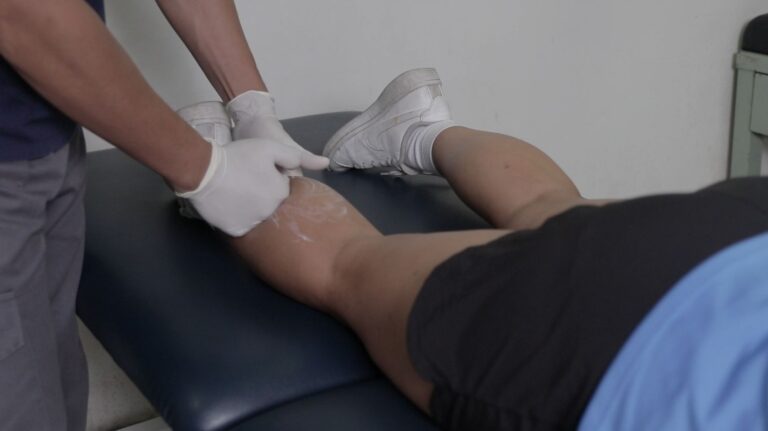“Is It Supposed to Hurt?” – What to Expect During Your First Few Physical Therapy Sessions

If you’ve recently scheduled your first physical therapy session, you might be wondering: Is it supposed to hurt? It’s a common and honest question—especially for people who are new to the process or unsure of what physical therapy actually involves. The truth is, discomfort can be part of the journey—but pain shouldn’t be.
What is Physical Therapy?
Physical therapy is a form of healthcare that helps people improve movement, manage pain, and recover from injury, surgery, or long-term conditions. It’s commonly used to restore function and prevent further disability through targeted exercises, manual techniques, education, and personalized care plans.
Whether you’re dealing with back pain, recovering after surgery, or managing a chronic issue like arthritis, physical therapy offers a structured, evidence-based approach to help your body recover and get stronger. If you’re looking for a physical therapy clinic that prioritizes function and long-term recovery, it’s important to find one that listens, adapts, and supports you through each step.
Should It Hurt?
Let’s talk about the big question.
Mild discomfort is normal. Sharp, intense pain is not.
In your first few sessions, your therapist will assess your mobility, strength, posture, and any compensations you may have developed. This means they may guide you through movements or stretches that feel stiff, tight, or a little uncomfortable—especially if you haven’t used those muscles in a while.
But that kind of discomfort, often described as soreness or a “good stretch,” is part of the process. It’s your body re-learning how to move properly. What’s not normal is pain that feels sharp, stabbing, or overwhelming. Your therapist should always work within your pain limits and make adjustments if something doesn’t feel right.
Why Discomfort Happens in Physical Therapy
During therapy, you’re working with muscles, joints, and tissues that might be inflamed, tight, weak, or just out of practice. That can lead to:
Muscle soreness from exercises that activate dormant areas
Tissue tightness being addressed with stretching or manual therapy
Scar tissue or restrictions being gently mobilized
Postural corrections that challenge your core and stabilizers
Think of it like restarting a workout routine after a long break. Your body’s learning curve may come with some aches, but that soreness is usually temporary and a sign that change is happening.
Communicating With Your Therapist
Open communication is key. If something feels too painful, too soon, or simply confusing—say so. A good therapist doesn’t expect you to suffer in silence. They’ll modify your program based on your pain tolerance, progress, and real-time feedback.
This is especially important during your early sessions. Pain should never be ignored. Your therapist will use your feedback to find the right balance of challenge and comfort.
Managing Soreness at Home
If you’re sore after a session, here are a few ways to help your body recover:
Hydrate well – Water supports muscle function and recovery.
Use ice or heat – Ice reduces swelling, while heat can soothe stiff areas.
Do light movement – Gentle walking or stretching can reduce tightness.
Get rest – Healing happens during rest as much as during movement.
Your therapist might also give you home exercises to support your progress between visits.
Emotional Ups and Downs are Normal, Too
Starting physical therapy can bring out a lot of emotions—hope, anxiety, even frustration. Especially if you’re recovering from a long-term injury or condition, you might feel discouraged when things don’t improve as quickly as you’d hoped.
But healing takes time. You may not feel “better” after just a session or two, and that’s okay. What matters is consistent progress, even if it’s small.
Signs You’re on the Right Track
Even if you’re still feeling some discomfort, here are signs that your therapy is working:
Improved range of motion
Less frequent or intense pain
Greater confidence using the affected area
Better posture or alignment
Ease doing daily tasks like walking, climbing stairs, or getting dressed
These small wins are often overlooked, but they’re proof that your body is adapting and healing.
Choosing the Right Physical Therapy Clinic
If you’re in the Philippines and searching for a trusted provider, look for a physical therapy clinic that offers personalized care, open communication, and a multidisciplinary approach.

Halcyon Fitness is one such provider, offering quality physical therapy in Makati and beyond. With over two decades of experience supporting recovery and movement, we understand that physical therapy is more than just treating symptoms—it’s about helping people reclaim strength, independence, and confidence in their bodies.
So—is it supposed to hurt?
Mild discomfort during physical therapy is expected. But pain that stops you in your tracks is a red flag. The key is working with a therapist who knows the difference and who’s committed to adjusting your plan based on your body’s needs.
If you’re just starting out, be patient with yourself. Celebrate the little wins. And remember, physical therapy isn’t just about recovering—it’s about thriving.
If you’re looking for physical therapy in the Philippines, Halcyon Fitness offers expert care tailored to your needs. Whether you’re navigating rehab after injury or seeking better movement in daily life, we’re here to support you every step of the way.

